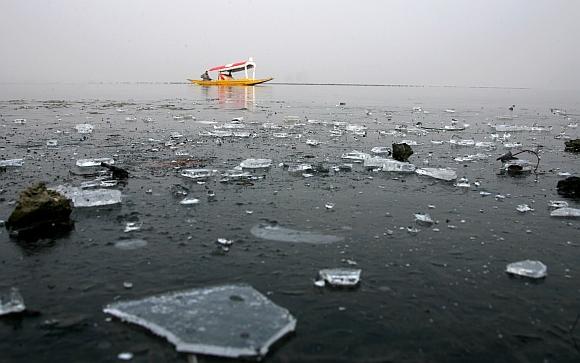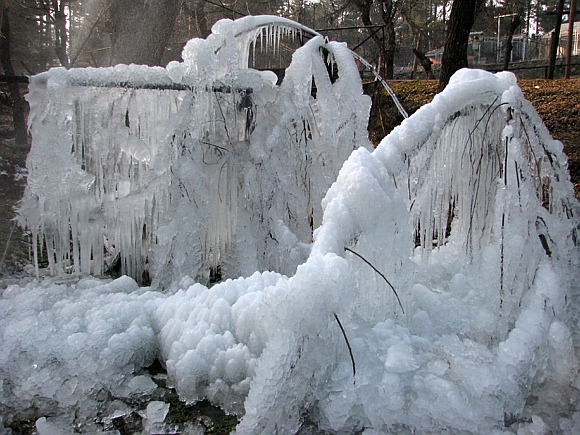 | « Back to article | Print this article |
IN PICS: Kashmir reels under severe cold
Kashmir is reeling under intense cold wave with minimum temperatures dropping to five degrees below the freezing point. The effect of the cold wave is compounded by equally severe power cuts and freezing of pipes carrying portable water. Mukhtar Ahmen reports.
The intense and widespread power cuts are triggering protest demonstrations almost on daily basis both in urban and rural areas.
The issue has also caught the attention of the moderate separatist All Parties Hurriyat Conference (APHC) chairman, Mirwaiz Moulvi Umar Farooq who at his Friday sermon in historic Jamia Masjid lambasted the coalition government for failing to provide adequate power supply to the people.
Click NEXT to read further...
IN PICS: Kashmir reels under severe cold
The power department has blamed low river discharge for lower power generation. The locals now use candles and kerosene lanterns to light their homes.
The situation has forced the locals to take recourse to traditional practices to brave the bone-chilling winter cold. The locals depend on the earthen fire pots woven in willow wicker known as the 'kangri' to keep body and soul together.
The Kangris come in different shapes and colours ranging in prices from Rs 150 to Rs 700 depending upon the quality of weaving and the material used.
The Kangris are worn under the traditional tweed over garments known as the 'Pherans'.
Click NEXT to read further...
IN PICS: Kashmir reels under severe cold
"The Pheran and the Kangri are so traditional that they have become Kashmir's brands since centuries. Many people in other parts of India also have started using the Pherans during the winter months.
And the Kangris have become decoration pieces for those who do not need them in warm places", said Arshad Ahmad, a local shopkeeper.
It is not just the Pheran and the Kangri those stand the locals in good stead during the winter months. The landlocked Valley, whose only land connection to the outside World is the Jawahar Tunnel across the Pir Panchal Mountains, often gets cut off because of heavy snowfalls on the highway resulting in blockades for days without end.
Click NEXT to read further...
IN PICS: Kashmir reels under severe cold
The traditional food recipes come handy for the locals to sustain the road blockades.
Dried Brinjals, Pumpkins, Tomatoes, smoked and dried fish are some of the traditional foods the locals use during the winter months. These foods are collected, dried and preserved during the summer months and stored for use during the winters.
Since sub-zero temperatures demand high calorie diets, the local delicacy known as harisa is relished by the locals throughout the winters.
Click NEXT to read further...
IN PICS: Kashmir reels under severe cold
The Harisa consists of minced mutton mixed with rice, condiments and spices cooked in huge vessels by expert chefs over simmering fires during the nights.
The Harisa is served with the local bread in the morning. A plateful of the delicacy affords enough calories to sustain the locals during the winter cold of the day.
The mainland valley has been so far been snow less with only higher reaches receiving couple of snowfalls so far. Thousands of tourists who arrived here on the New Year eve are disappointed with no snow on the ground.
Click NEXT to read further...
IN PICS: Kashmir reels under severe cold
The valley last year saw a boom in tourist inflow which is still continuing.
MET office is predicting rains and snowfall later this week which must bring cheers not only to the locals but also to visiting tourists. The continued dry weather has also led to respiratory ailments in the valley.
Check out our top slide shows
Click on MORE to see another set of PHOTO features...






